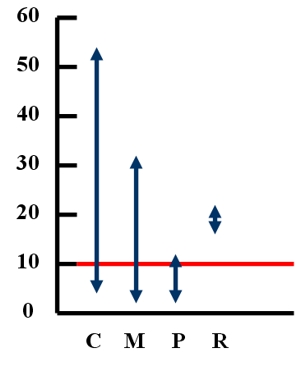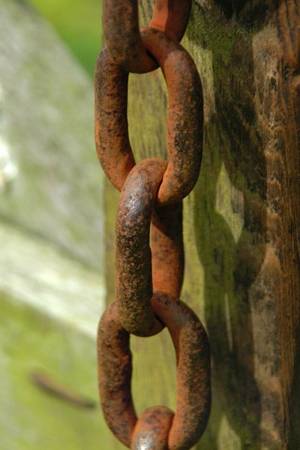|
|
 |
|
|
|
 |
| |
|
|
 |
Urban Climate
Read more |
The impact of acid rain on human health and economy
Acid rains have various direct and indirect impacts not only on natural environment but also on people and our infrastructure (buildings, roads etc.). The most
spectacular effects concern the deterioration of historical monuments.
|
|
|
|
|
 |
|
Human health
The pollutants that cause acid rain (mainly sulfur dioxide (SO2) and nitrogen oxides (NOx)) can affect human health in a few ways. They are harmful for human respiratory system and blood vessels. See also the section on bioclimate to learn more about the impact of air pollution on human health (see the link at the bottom of the page).
Polluted air
The SO2 and NOx emission and acid rain give risk to respiratory problems such as dry coughs, asthma, bronchitis, headaches, eye, nose, and throat irritation. Acid rain can aggravate a person's ability to breathe and may increase disease which could lead to death. SO2 and NOx interact in the atmosphere to form fine sulfate and nitrate particles that can be transported long distances by winds and inhaled deep into people's lungs. Those particles are called PM 2.5 (i.e. particulate matter of the diameter up to 2.5 Ám) and can go deep into the lungs and cause cancer. Fine particles can also penetrate indoors. The London smog is also named acid smog. During the event of 1952, the pH was as low as 1.5, and it caused the death of 4000 persons (learn more about smog in the section "Air pollution" (Basic), "Negative effects", see link at the bottom of the page).
|
 |
 |
|
1. Ranges of lead levels in blood, among children, in micrograms per deciliter, in chosen countries. Explanations: C - China (research from 1988), M - Mexico (1995), P - Poland (1992-1994), R - Roumania (1995). Red line marks the level of 10 micrograms per deciliter. See text on the left for more information.
Author: Anita Bokwa
Source of data: http://www.wri.org/wr-98-99/metals.htm
|
|
 |
Polluted water
Acid water destroys water installations and dissolves heavy metals which they may contain. Additionally, heavy metals get released by acid rains from soil and also go to drinking water. They can be absorbed by both plants (through soil and/or direct contact) and animals (from food and/or direct contact). Then they accumulate in human body, which may cause e.g. cancer. Brain damage, kidney problems, and Alzheimer's disease has been linked to people eating "toxic" animals/plants.
Have a look at Fig. 1. Exposure to lead, even at very low levels, is highly toxic. The level of 10 micrograms of lead per 1 deciliter of blood is generally used as the level above which health impacts are known to be substantial. Among urban children in developing countries, the majority of children younger than 2 years of age have average blood lead levels greater than 10 micrograms per deciliter, estimates suggest. The figure shows the value ranges of lead levels found in the blood of children in chosen countries. Unfortunately, the mentioned level of 10 micrograms per deciliter is often exceeded. |
|
Buildings and monuments
Acid precipitation affects stone primarily in two ways: dissolution and alteration. It can be especially damaging to buildings made of limestone and marble. Limestone and marble are primarily composed of the mineral calcite (calcium carbonate, CaCO3), which dissolves readily in weak sulfurous, sulfuric, and nitric acids. In exposed areas of buildings and statues, we see roughened surfaces, removal of material, and loss of carved details. Stone surface material may be lost all over or only in spots that are more reactive. On one hand, some soils that contain the calcium carbonate, have a natural ability to neutralize acids, the H+ is removed due to the reaction:
CaCO3 + 2H+  Ca2+ +CO2 + H2O Ca2+ +CO2 + H2O
Also when soil-dust particles that contain CaCO3 collide in the air with acidified raindrops, that reaction takes place. Unfortunately, the same process is partly responsible for the erosion of monuments and buildings made of marble or limestone. When water containing sulfuric acid coats a calcite surface, the hydrogen ion H+ dissolves the calcite, as described above, and the sulfate ion reacts with the calcium ions and forms a clear-to-white gypsum crust over the marble or limestone:
Ca2+ +SO42- + 2H2O  CaSO4 * 2H2O CaSO4 * 2H2O
Rain over time removes some of the gypsum crust, creating tiny crevices and causing erosion. Another reaction concerns nitric acid which dissociates the calcium carbonate:
CaCO3 + 2HNO3(aq) -> Ca2+(aq) + 2NO-3(aq) + H2O + CO2
Even though acid rain has been reduced in recent years in many regions, buildings are still showing signs of damage. This is because the acid rain has permanently changed the stones from which the building is made. Even metals get corroded by acid rains. Other vulnerable materials include carbon-steel, nickel, zinc, copper, paint, some plastics, leather and textiles. Stainless steel and aluminium are more resistant materials.
|
 |
 |
2. The sculpture presenting one of the twelve apostols, which was placed in front of the St. Peter and St. Paul church in the old town of Cracow, Poland. It is made of limestone and has been destroyed by acid rains, like the other eleven ones. Therefore, the copies were made to replace the damaged original sculptures (see Fig. 3).
Photo: Sebastian Wypych |
|
 |
 |
 |
3. The copy of the sculpture presented in Fig. 1, which replaced the damaged original one.
Photo: Sebastian Wypych |
|
|
The restoration of monuments and buildings is costly. For example, Westminister Abby in London, England faced up to ten million pounds worth of repairs due to acid rain before the early 1990s. However, although the economic losses can be calculated, the aesthetical aspects of the world's cultural treasures cannot be price-tagged. The Taj Mahal in India, the Acropolis and even newer buildings Canada's Parliament Building and the U.S. Capitol Building are seeing the effects of acid rain.
|
Cars
Automotive coatings may be damaged by all forms of acid rain, including dry deposition, especially when dry acidic deposition is mixed with dew or rain. However, it has been difficult to quantify the specific contribution of acid rain to paint finish damage relative to damage caused by other forms of environmental fallout, by the improper application of paint or by deficient paint formulations. Usually the damage is permanent; once it has occurred, the only solution is to repaint.
|
 |
 |
 |
|
4. Acid rains cause intensified corrosion and rust formation of metal objects used outdoor, like chains, roofs, cars. That in turn generates higher costs of maintenance and renovation.
Source of the photo: www.freefoto.com
|
|
About this page:
author: Anita Bokwa - Jagiellonian University, Cracow, Poland
educational reviewing: Michael Seesing - University of Duisburg, Duisburg, Germany
last update: 2004-08-05
|
|
 |
|









